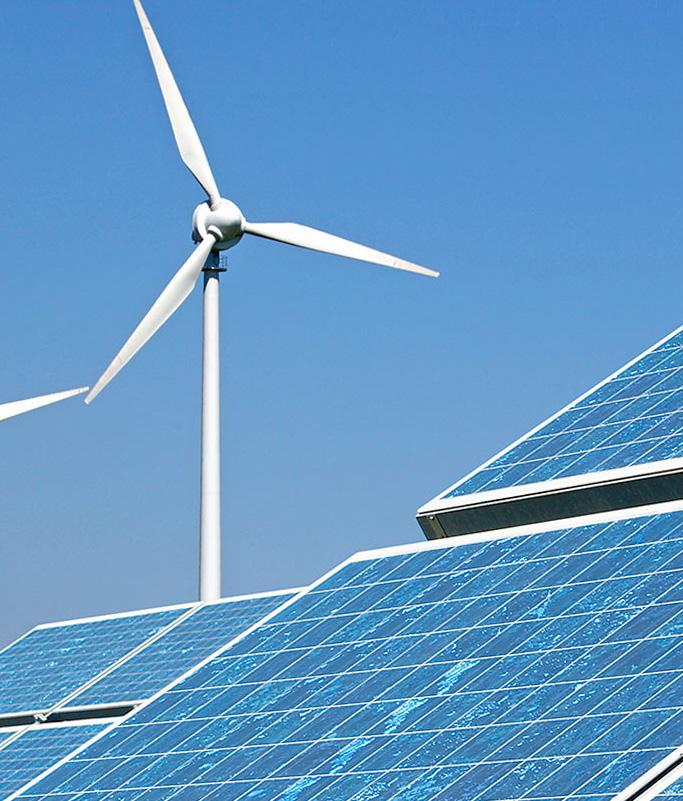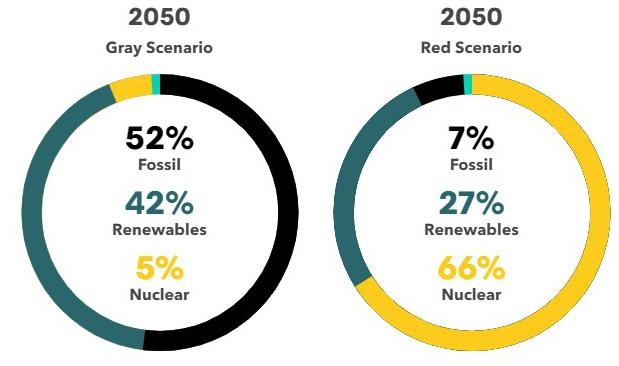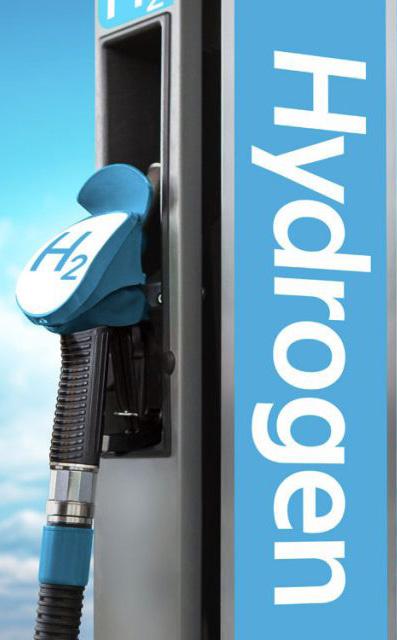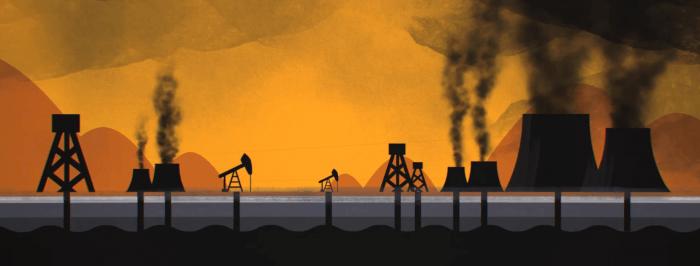
5 minute read
The three paths to net-zero
BloombergNEF’s analysis of the energy economy's future identifies three very different scenarios in which we achieve net-zero emissions
The New Energy Outlook (NEO) is BloombergNEF’s annual long-term scenario analysis on the future of the energy economy.
Advertisement
This year's edition presents three climate scenarios that meet the Paris Agreement and achieve net-zero emissions in 2050.
The Green Scenario is a net-zero pathway where so-called ‘green hydrogen’ complements greater electricity use, recycling and bioenergy.
The Gray Scenario assumes greater use of electricity and renewable power is complemented by carbon capture and storage technology and allows for the continued use of some fossil fuels.
The Red Scenario assumes smaller, modular nuclear is deployed to complement wind, solar and battery technology in the power sector, with dedicated nuclear plants manufacturing so-called “red hydrogen”.
This year’s analysis has been designed to support strategy development and long-term planning.
Emissions
A core part of the BNEF analysis is constructing sector by sector emissions budgets to achieve net-zero in 2050 with an orderly transition.
Together these show that global energy-related emissions need to drop 30% below 2019 levels by 2030, and 75% by 2040, to reach net-zero in 2050.
This is a 1.75 degree equivalent budget that implies a 3.2% reduction each year to 2030 and a swift reversal of recent trends: emissions rose 0.9% a year from 2015 to 2020.
The power sector needs to make the greatest progress over the next decade, reducing emissions by 57% from 2019 levels by 2030, and then 89% by 2040.
Road transport emissions must fall 11% by 2030, then 80% below 2019 levels in 2040.
For industry and buildings it’s 16% and 12% down by 2030 and 58% and 55% by 2040.
Clean power
Electrification plays a large role. Across all scenarios, the use of electricity in industry, transport and buildings raises its share of total final energy to just below 50% in 2050, from 19% today.
As a result, electricity generation is almost 62,200TWh in BNEF’s Gray Scenario, more than double the 2019 total.
But in the Green Scenario, where electricity is also used to produce large quantities of hydrogen, power generation is twice as large again – more than 121,500TWh, or roughly 4.5-times 2019 levels. This is split between green hydrogen production, which takes 49%, and 51% that is consumed directly in the end-use economy.
While the first 1,000 gigawatts of wind and PV took twenty years to deploy, getting to net-zero emissions in our Green Scenario will need about 1,400GW of renewables to be deployed every year, on average, for the next three decades.
In the Green Scenario, the market opportunity for renewables is staggering.
Primary energy supply
Each of net-zero scenario describes major transformations in the primary energy supply.
Today, some 83% of primary energy is fossil fuels, while wind and solar PV


account for 1.3%.
In the Green Scenario, which prioritizes clean electricity and green hydrogen, wind and solar grow to 15% of primary energy in 2030, 47% by 2040 and 70% in 2050, split 62% wind and 38% PV.
In the Red Scenario, nuclear makes up a whopping 66% of primary energy in 2050, compared with 5% today.
In contrast, in the Gray Scenario, where widespread use of carbon capture and storage means coal and gas continue to be used, fossil fuels decline just 2% a year to 52% of primary energy supply in 2050, with wind and PV growing to 26%.
Getting on track
Achieving net-zero emissions in 2050 means deploying commercially available abatement technologies in each sector this decade.
More than three quarters of the effort to cut emissions in the next nine years falls to the power sector


and to faster deployment of wind and solar PV.
Another 14% is achieved with greater use of electricity in transport, in heating for buildings and in providing lower-temperature heat in industry.
Greater recycling in steel, aluminum and plastics accounts for a 2% drop in emissions, greater building efficiency 0.5%, and growth of bioenergy for sustainable aviation fuel and shipping another 2%.
The following milestones will need to be achieved by 2030 to be on track to reach net-zero by mid-century:
• 505GW of new wind power per year • 455GW of solar per year • 245GWh of batteries per year • 35 million new EVs on the road each year • 18% of all aviation fuel becomes sutainable • 18 million heat pumps deployed each year • 70% of all coal-fired power is retired
Hydrogen
Hydrogen must scale rapidly from its current very small base, but the size of its role varies widely by scenario.
New demand for hydrogen in 2050 is just 190 million metric tons in the Gray Scenario, compared with 1,318 million tons in the Green Scenario, where it increases to around 22% of total final energy consumption, compared with less than 0.002% today.
Carbon capture and storage technologies
These can be applied across a variety of processes that emit carbon dioxide, including power generation and aluminum, steel and cement production.
Widespread use of these technologies captures over 174 gigatons of carbon dioxide over the outlook to 2050, in the Gray scenario.
Nuclear
In the Red Scenario, which prioritizes nuclear power, there is 7,080GW of nuclear capacity by 2050. This is about 19-times the nuclear power capacity installed globally today.
Just under half of that is used to generate electricity in the end-use economy, where smaller, more modular reactors complement renewables.
The rest is made up of dedicated nuclear plants that power electrolyzers producing so-called ‘red hydrogen’.
Fossil fuels
Demand for fossil fuels sees a significant decline over the next 30 years in all scenarios.
The Green and Red Scenarios show demand for coal, oil and gas for combustion drop to zero by 2050, replaced by renewables, electricity and hydrogen.
Fossil fuels fare better in the Gray Scenario, where carbon capture and storage offer a way forward for coal in power generation and industry, and reverses some of the decline seen in gas from 2030. However, it does little to support oil, which is predominantly used in transport, where CCS can barely play a role.












